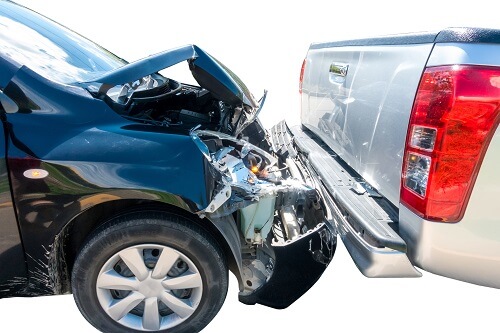
Who is at fault when I get rear-ended in a car accident?
Rear-End collisions are the most common type of auto accident, accounting for approximately 29% of all motor vehicle accidents. Many drivers involved in these accidents believe that the driver who caused the collision (the following car) is always legally at fault for the accident. While this is true for many rear-end collisions, it may not always be the case. Legal fault may depend on several factors that can vary greatly from case to case.
Liability in Rear-End Collisions
Typical causes of a rear-end collision may include speeding, distracted driving, tailgating, or weather conditions. Victims of car collisions will typically bring a claim of negligence against the other driver to recover damages for their personal injuries. To establish that an operator of a vehicle acted negligently, the plaintiff must prove that the other driver breached their duty to operate their vehicle in a reasonably safe manner which caused the victim’s damages. Included in a driver’s general duty of safe operation of their vehicle, is the duty to be alert of oncoming traffic and maintain a safe following distance between their car and the leading vehicle. In Louisiana, a breach of this duty leads to the presumption that the following car is negligent in causing a rear-end collision. This is based on the notion that the following vehicle can take evasive measures to avoid an accident because of its position and view of the leading car.
Although the general rule states that the following car is liable for a rear-end collision certain situations may give rise to an exception to this rule.
- The Leading Car Does Not Have Functioning Break Lights: Louisiana law requires all vehicles to be equipped with operating brake lights that are visible from a distance of no less than 300 feet from the rear in normal sunlight. If the car leading the following car is not equipped with functioning or legally bright enough brake lights, this may lead to a finding that the leading car is at fault. Malfunctioning brake lights may prevent the following car from keeping a safe distance away from the lead car, especially at night.
- Sudden Maneuvers by the Leading Car: Distracted and fatigued drivers are often unaware of hazards on the road until it is too late to safely avoid them. This may cause the operator to slam on their brakes or make a sudden lane change to avoid the hazard at the last minute. Erratic actions by another driver may prevent the following vehicle or a car in a neighboring lane from avoiding a rear-end collision.
- Leading Vehicle Backing into the Following Car: Louisiana law prohibits drivers from reversing down a roadway or shoulder in a reckless manner. Violating this law puts pedestrians and other drivers, especially drivers behind the reversing vehicle, at risk of being injured. Violating this statute will lead to a presumption that the reversing vehicle’s driver was negligent in the operation of the vehicle.
Louisiana courts apply the comparative fault system to negligence cases. Under the comparative fault system, a judge or jury will decide what percentage of fault each driver is responsible for. This means that even if a driver is found partly negligent in causing a rear-end collision, they may still recover damages.
Persuading a judge or jury that you were not at fault for a rear-end collision by proving that you were maintaining a safe distance from the leading car or that your brake lights were working at the time of the accident can be difficult.
It is important that you hire an experienced Louisiana personal injury attorney that knows what it takes to obtain the damages you deserve after your rear-end collision. The personal injury attorneys at Scott Vicknair have decades of experience in motor vehicle negligence claims and are ready to help you navigate this road.
Contact our personal injury attorneys today at 504-500-1111 for a free consultation on your car crash.


